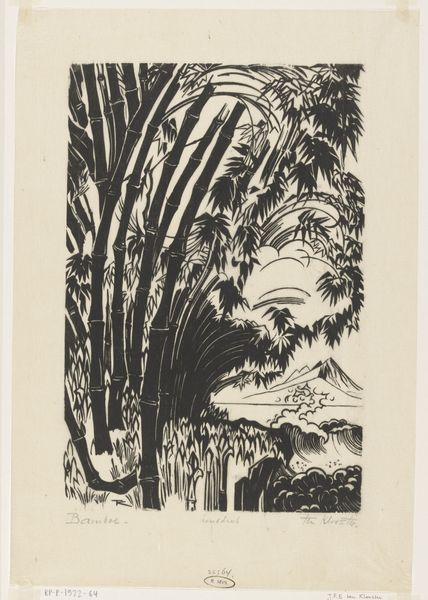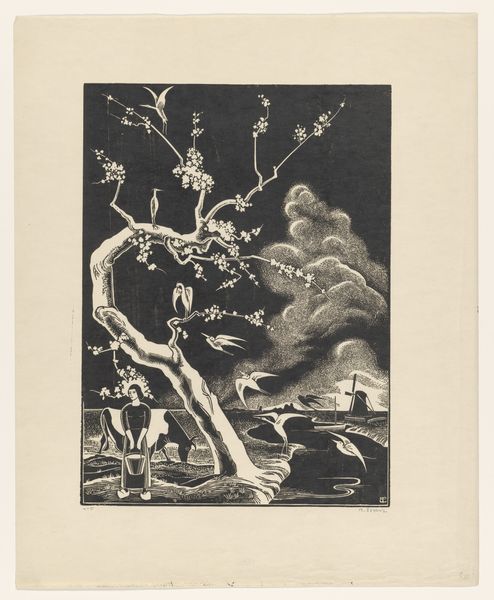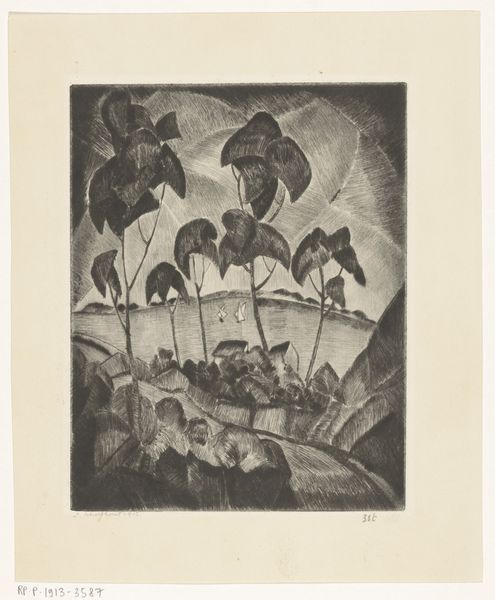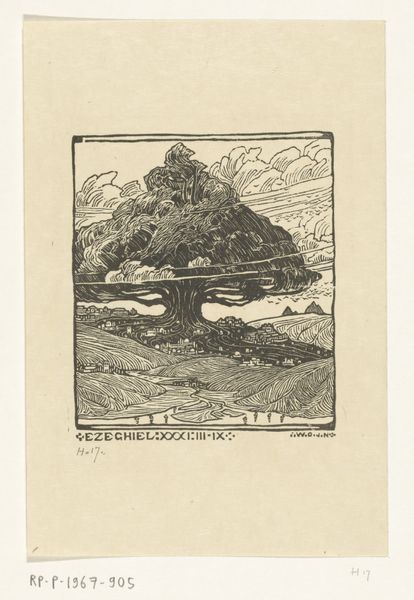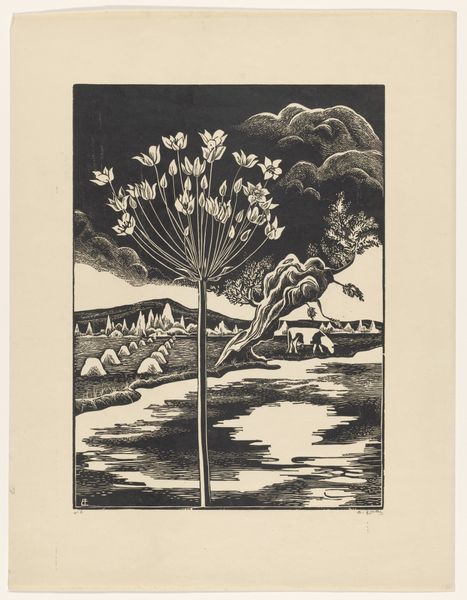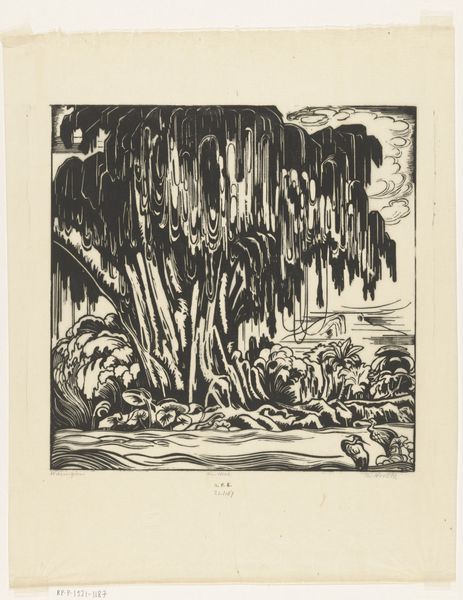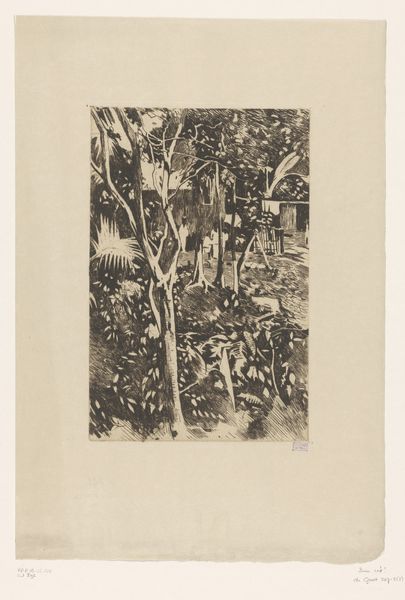
Dimensions: height 570 mm, width 440 mm
Copyright: Rijks Museum: Open Domain
Curator: "Duinlandschap met hooioppers," or "Dune Landscape with Haystacks," by Bernard Essers, is a woodcut print from the period between 1931 and 1937. It presents a striking scene of the Dutch landscape rendered in stark blacks and whites. What catches your eye first, I wonder? Editor: Oh, the sheer contrast! It’s all angles and textures, yet strangely calming. The haystack shapes against that little house give it such a lovely quietude, doesn’t it? Like stepping into a dream of simple harvests. Curator: The haystacks, indeed. They punctuate the foreground, drawing us into this carefully constructed space. Essers’s use of geometric forms brings a modernist sensibility to a very traditional subject. He teases expressionism out of a typical landscape. It looks simultaneously ancient and modern, you know? Editor: Absolutely. The stark contrast feels archetypal – it’s not just visual; it feels deeply ingrained. Look at that central tree, dividing the composition. The light and dark sides. The very essence of duality staring back at us. Reminds me of old symbolic renderings of the Tree of Life, standing as a witness between worlds. Curator: Fascinating point! I agree, the tree stands almost as a symbolic guardian. It’s a very solid element, grounding the slightly fantastical scene. And the way Essers cuts the wood, creating those swirling, almost turbulent textures… there’s a raw energy beneath the surface calm, like a suppressed anxiety in the pre-war era. Editor: Exactly. And isn't it intriguing how he's made the negative space work so hard? The untouched parts of the print almost glow, illuminating these small rural markers against the immensity of nature's rhythm. It feels significant that humans are tiny in the face of such scale, a tiny structure, some bundles. Curator: That use of light certainly emphasizes the drama. Each slice creates meaning with texture and form. This woodcut feels as much a comment on human existence as it does an ode to the Dutch countryside. Editor: It certainly does stay with you. It makes one pause and appreciate the silent language of symbols woven through the simplest landscapes. It's really lovely! Curator: Indeed, the kind of piece that invites multiple interpretations each time you view it. The details offer stories on many levels.
Comments
No comments
Be the first to comment and join the conversation on the ultimate creative platform.
